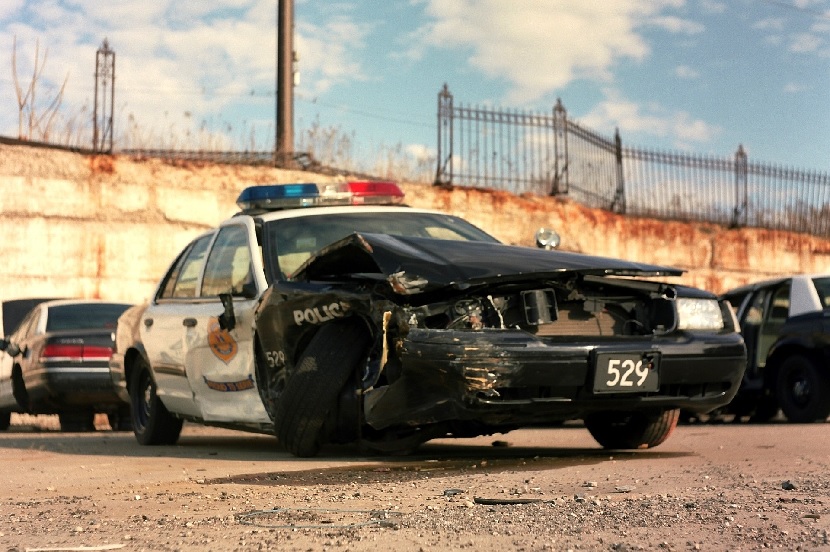“Be afraid. Be very afraid.” — Geena Davis as Veronica Quaife in The Fly, directed by David Cronenburg
Try as we might, we safety professionals cannot make people want to be safe. The challenge then, is to make them safer than they want to be.
The Law of Conservation of Recklessness
There is not officially a Law of Conservation of Recklessness. That’s just what I like to call it. Instead, it goes by more scholarly names: risk compensation, risk homeostasis, and in some circles, the Peltzman effect.
The premise of risk compensation is that people adapt their behavior to the risk they perceive. When they believe they are at greater risk, they behave with greater caution. Conversely, when they believe they are at less risk, they behave with less caution—more recklessly.
The concept of risk homeostasis takes it one step further. Gerald Wilde suggested in 1982 that people optimize the expected benefits and costs of reckless behavior against the expected benefits and costs of cautious behavior to achieve a target level of risk. When people are safer than they want to be, they seek the benefit of riskier behavior until they are just as safe as they want to be.
Sam Peltzman’s principal contribution to this field of study is often cited as his observation that the offsetting effects of improved safety on the one hand and induced recklessness on the other hand cancel each other out. That may or may not be true; the literature for and against this premise is vast. No, the key insight associated with the Peltzman Effect is that regarding the impact of the increased recklessness, not only on the person who is also benefitting from the improved safety, but on innocent bystanders who get no corresponding benefit from the improved safety.
Booth’s Rule
Bill Booth’s companies have been manufacturing skydiving safety gear since 1972. Booth’s Rule 2 states that “The safer skydiving gear becomes, the more chances skydivers will take, in order to keep the fatality rate constant.” Not even Bill Booth believes that skydivers are deliberately trying to keep the fatality rate constant. But even as skydiving equipment has become increasingly safer and more reliable, the fatality rate on a per participant basis has stayed relatively constant. Why? Because the safer skydivers feel, the less cautious they are. Another case of Conservation of Recklessness.
Police Fatalities
Most people believe that policing is extremely dangerous work, especially police officers themselves. Do police have a dangerous job? More dangerous than average! The average fatality rate for all jobs in the U.S. is about 3.5 fatalities per 100,000 full time equivalents. policing is over three times more dangerous. That makes it a little more dangerous than operating mining machines, a little less dangerous than being a farm worker.
How do police die on the job? If you’re thinking workplace violence—homicide—you’re right. Workplace violence accounts for almost half of work-related police fatalities. More than half of work-related police fatalities are from auto accidents. As percentages, police fatalities from workplace violence and from auto accidents are both well in excess of the typical job. Much is said about making police work safer, but the focus is entirely on workplace violence. Why not transportation? Because police officers, like most of us, are not sufficiently afraid of the three-ton machines they cruise the streets in.
Impact on Process Safety
On more than a few occasions during the layer of protection analysis (LOPA) for a hazardous scenario, I’ve heard the process engineer describe the various layers of protection. The initiating cause – the failure – is that the operator gets distracted and fails to stop a step in time. Alone, the risk exceeds the company’s risk tolerance criteria. But wait! There is another layer of protection that brings the risk down to a tolerable level, an automated high-high shut-off.
Great! A layer of protection that is independent from the initiating cause. Except that the operator says that they don’t bother stopping the step, because they let the high-high shut-off take care of it. So, instead of an initiating cause and an independent layer of protection, we’re back to a single failure and no layer of protection. It’s just that now, instead of an error as the cause, it’s an interlock failure. The engineer thought they were installing a layer of protection as a back up to an error, they simply substituted one failure for another, for no net improvement in risk.
Be Afraid. Be Very Afraid.
What the literature rarely points out is that it is the perception of risk that drives these behavioral adaptations, not the actual level of risk. The safer we make workers feel, the more reckless their behavior will be. The more imperiled they feel, the more cautious they will be.
My instinct when in the plant and talking about safety, has always been to be reassuring. “There are lots of layers of protection in place. Everything that can be done has been done. Of course, you’ll be okay.” It has only recently occurred to me that by being so reassuring, I’ve effectively negated the most effective layer of protection: a worker’s caution and care.
What we need to do is make workers safer, but not make them feel any safer. We don’t want to see risk compensation – The Law of Conservation of Recklessness – offset the progress that is the result of continuous improvement. Somehow, we need for everyone to stay on their toes. We need to break the Law of Conservation of Recklessness. For their own sake, we want workers to be afraid. To be very afraid.
